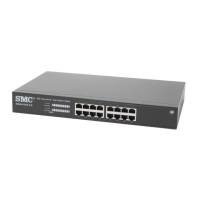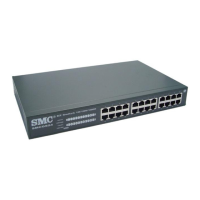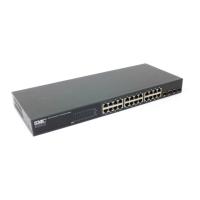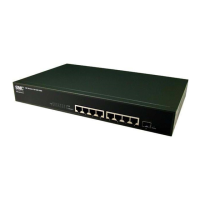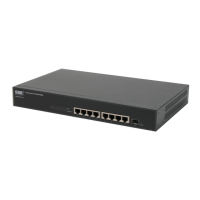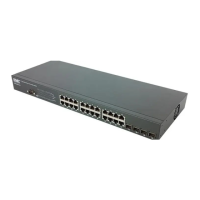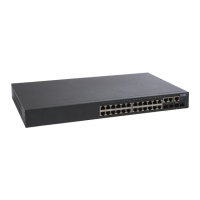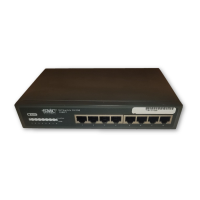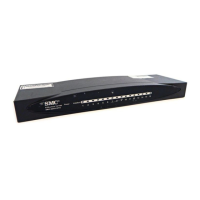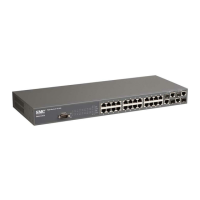C
HAPTER
4
| Configuring the Switch
Configuring the Spanning Tree Algorithm
– 117 –
Figure 41: STP Root Ports and Designated Ports
Once a stable network topology has been established, all bridges listen for
Hello BPDUs (Bridge Protocol Data Units) transmitted from the Root Bridge.
If a bridge does not get a Hello BPDU after a predefined interval (Maximum
Age), the bridge assumes that the link to the Root Bridge is down. This
bridge will then initiate negotiations with other bridges to reconfigure the
network to reestablish a valid network topology.
RSTP - RSTP is designed as a general replacement for the slower, legacy
STP. RSTP is also incorporated into MSTP. RSTP achieves must faster
reconfiguration (i.e., around 1 to 3 seconds, compared to 30 seconds or
more for STP) by reducing the number of state changes before active ports
start learning, predefining an alternate route that can be used when a node
or port fails, and retaining the forwarding database for ports insensitive to
changes in the tree structure when reconfiguration occurs.
MSTP – When using STP or RSTP, it may be difficult to maintain a stable
path between all VLAN members. Frequent changes in the tree structure
can easily isolate some of the group members. MSTP (which is based on
RSTP for fast convergence) is designed to support independent spanning
trees based on VLAN groups. Using multiple spanning trees can provide
multiple forwarding paths and enable load balancing. One or more VLANs
can be grouped into a Multiple Spanning Tree Instance (MSTI). MSTP builds
a separate Multiple Spanning Tree (MST) for each instance to maintain
connectivity among each of the assigned VLAN groups. MSTP then builds a
Internal Spanning Tree (IST) for the Region containing all commonly
configured MSTP bridges.
Figure 42: MSTP Region, Internal Spanning Tree, Multiple Spanning Tree
x
Designated
Root
Designated
Port
Designated
Bridge
x x
x
Root
Port
x
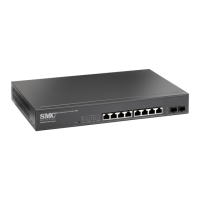
